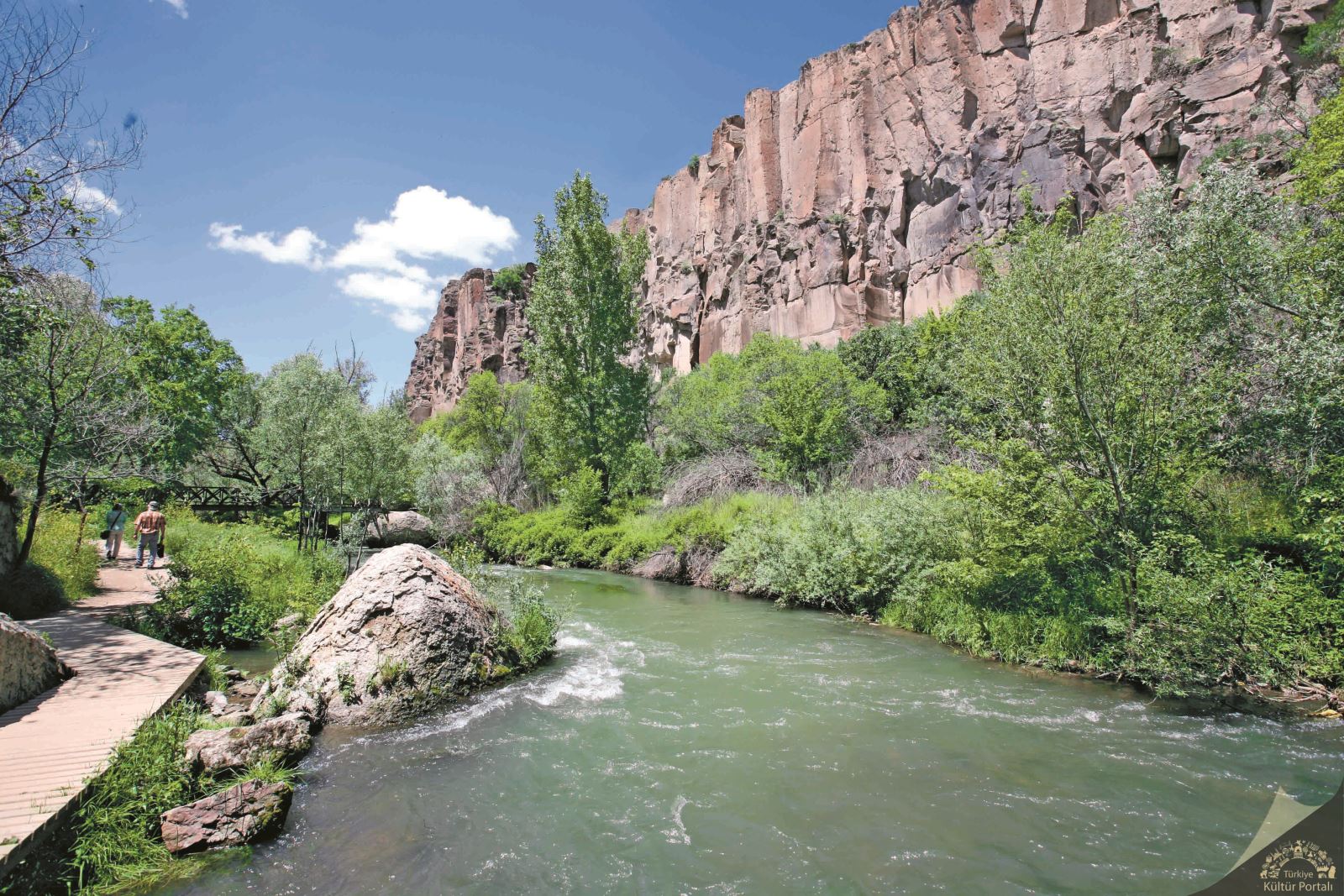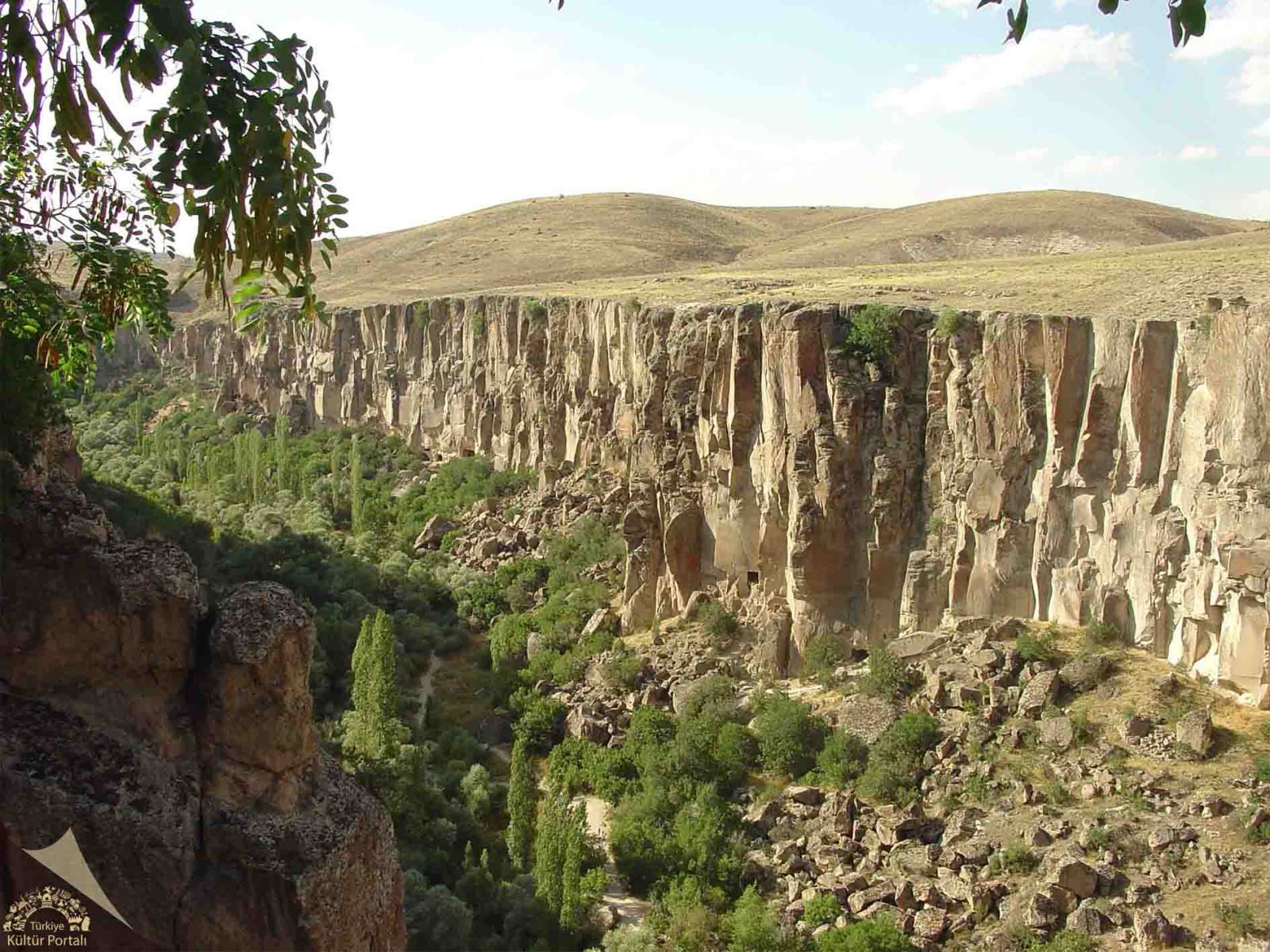Ihlara Valley, whose name is Peristremma in historical sources, with its vegetation, churches and chapels; It is one of the rare areas where nature, history, art and culture come together.
Where is Ihlara Valley?
Ihlara Valley, located within the borders of Güzelyurt District of Aksaray Province, has an important place among the canyons in the world. Ihlara Valley, which is 18 kilometers long, 150 meters deep and 200 meters wide, has thousands of living spaces, and unlike other canyons, it is the largest canyon in the world where people lived in the past. The Melendiz River, which shapes and gives life to the Ihlara Valley, is the main source of life here. Hundreds of churches and rock-carved places created by the easy carving of the rocks surrounding the valley have made the valley one of the most important centers of culture and civilization in the world.

Ihlara Valley – Aksaray
The Ihlara Valley was formed as a result of thousands of years of erosion by the Melendiz Stream, which moves over the collapsed area after tectonic uplifts and the eruption of the Hasandağı volcano. Melendiz Stream creates magnificent and striking beauties throughout the valley by cutting the land deep and steeply along the Ihlara Valley. The small streams that take their sources from the Melendiz Mountains merge and flow in the southeast-northwest direction and reach the Mamasin Dam. Melendiz Stream draws nearly thirty meanders along the valley. Although the distance between Ilısu and Selime is 10 kilometers by bird’s flight, the actual distance reaches 18 kilometers due to the meandering of the stream.
Another remarkable feature of Ihlara Valley is its nature. At the edge of the water at the bottom of the valley, which is steep like a wall, deep and narrow, there is a dense strip of greenery consisting of vineyards and gardens. It is as if nature has hidden itself in the valley. Around the valley, steppe-like and weak vegetation is dominant. When you come to the slopes of the valley, you will see that a rich and green piece of nature is hidden in the valley. This state of being hidden also determined the special place of the valley. Unlike the continental climate in the region, a climate close to the Mediterranean climate is observed at the bottom of the valley. The valley floor is a natural microclimate area with this feature. Accordingly, a wide variety of plants, especially pistachios, are grown on the valley floor.

Ihlara Valley – Aksaray
The frescoed churches carved into the rocks in the Ihlara Valley have been preserved and have survived as an unprecedented historical treasure. These frescoed churches and settlements, which were created by the easy excavation of the rocks since the first years of Christianity, are located in the Ihlara Valley, which continues for 14 kilometers from Ihlara to Selime. The first examples of these churches in the Ihlara Valley, where nature and history coexist in the middle of the Cappadocia River (Patamos Kapadokus) in the early ages, were built in IV. seen until the turn of the century. The painting technique of churches can be divided into two parts. The churches around Ihlara show features known as “Cappadocia Type”. Examples of these are the Churches of Eğritaş, Ağaçaltı, Kokar, Pürenliseki and Yılanlı. Those in the Belisırma section are decorated with “Byzantine Type” paintings.
Source: Aksaray Provincial Directorate of Culture and Tourism
